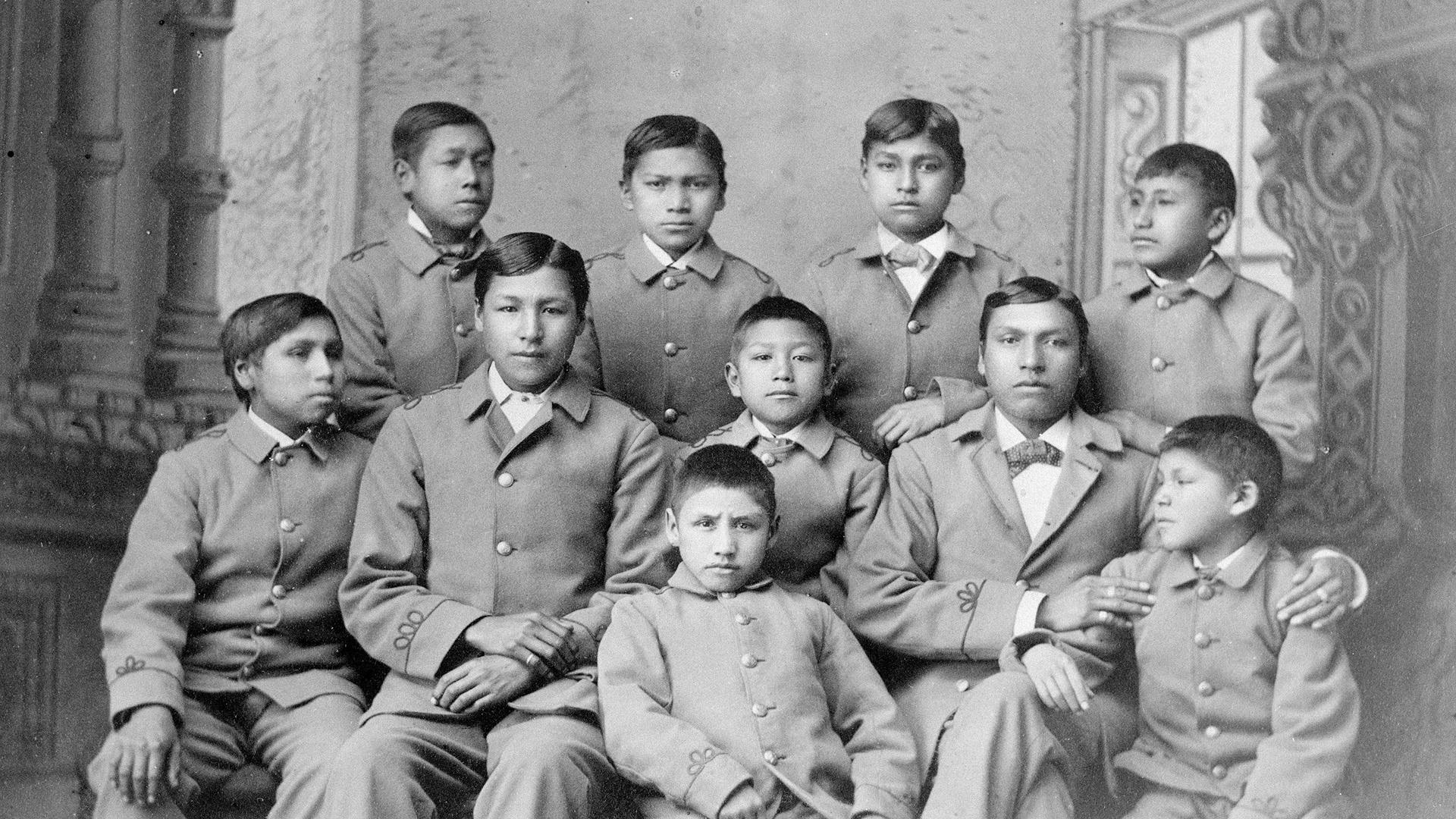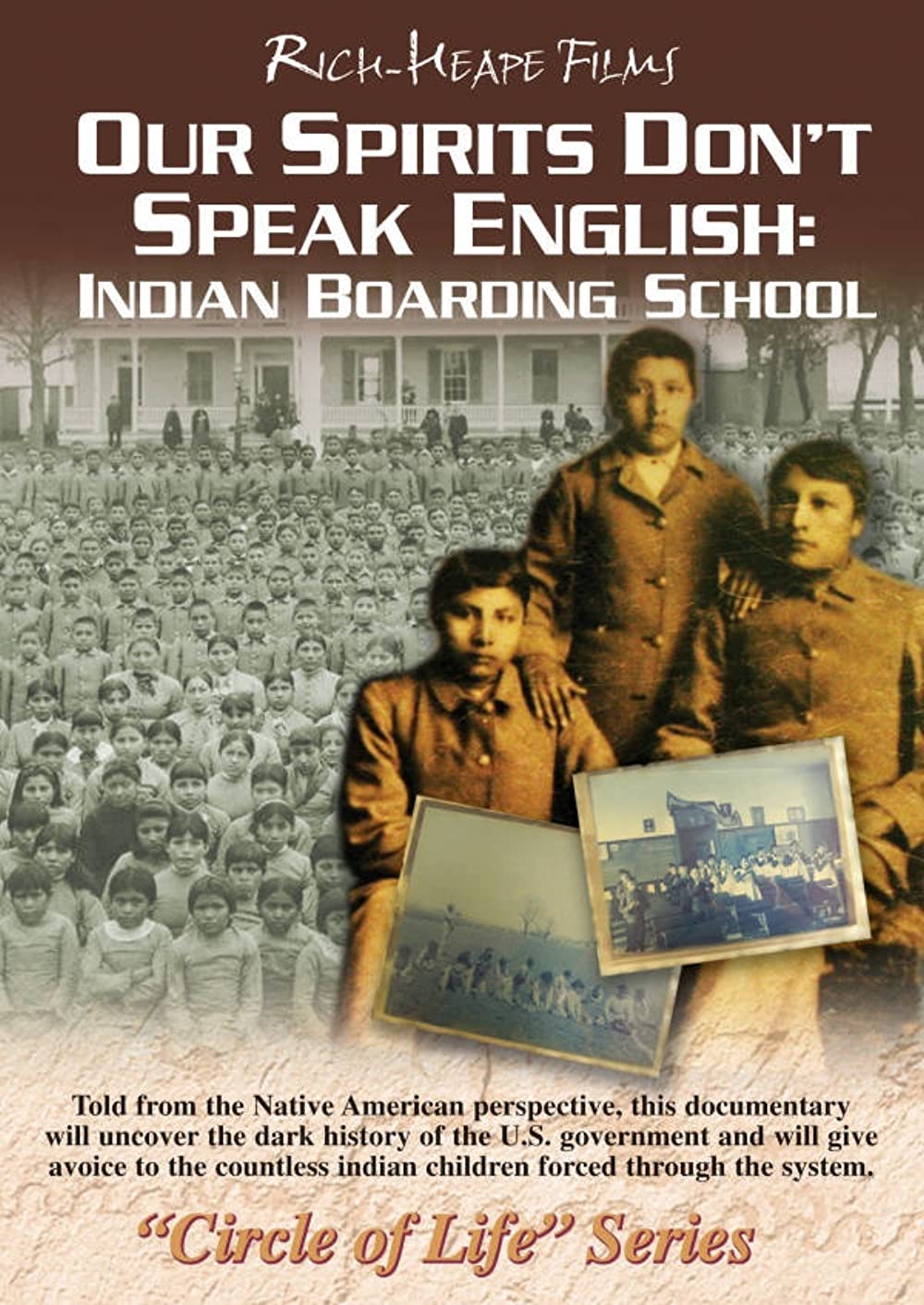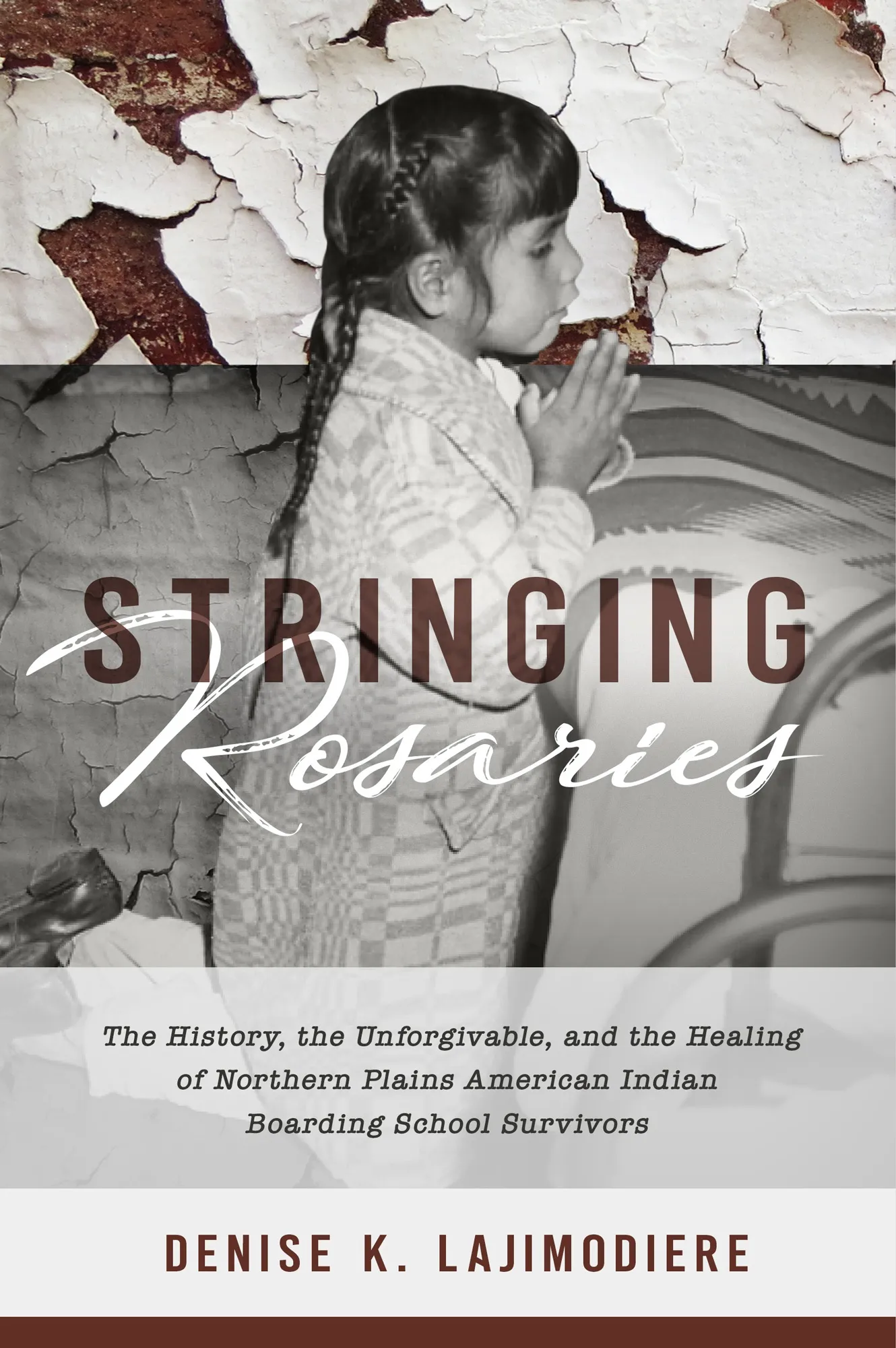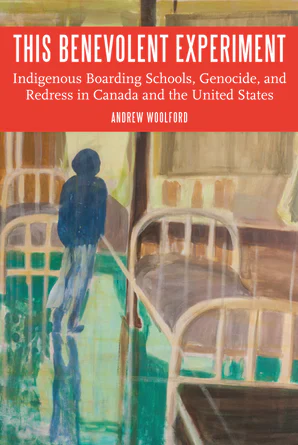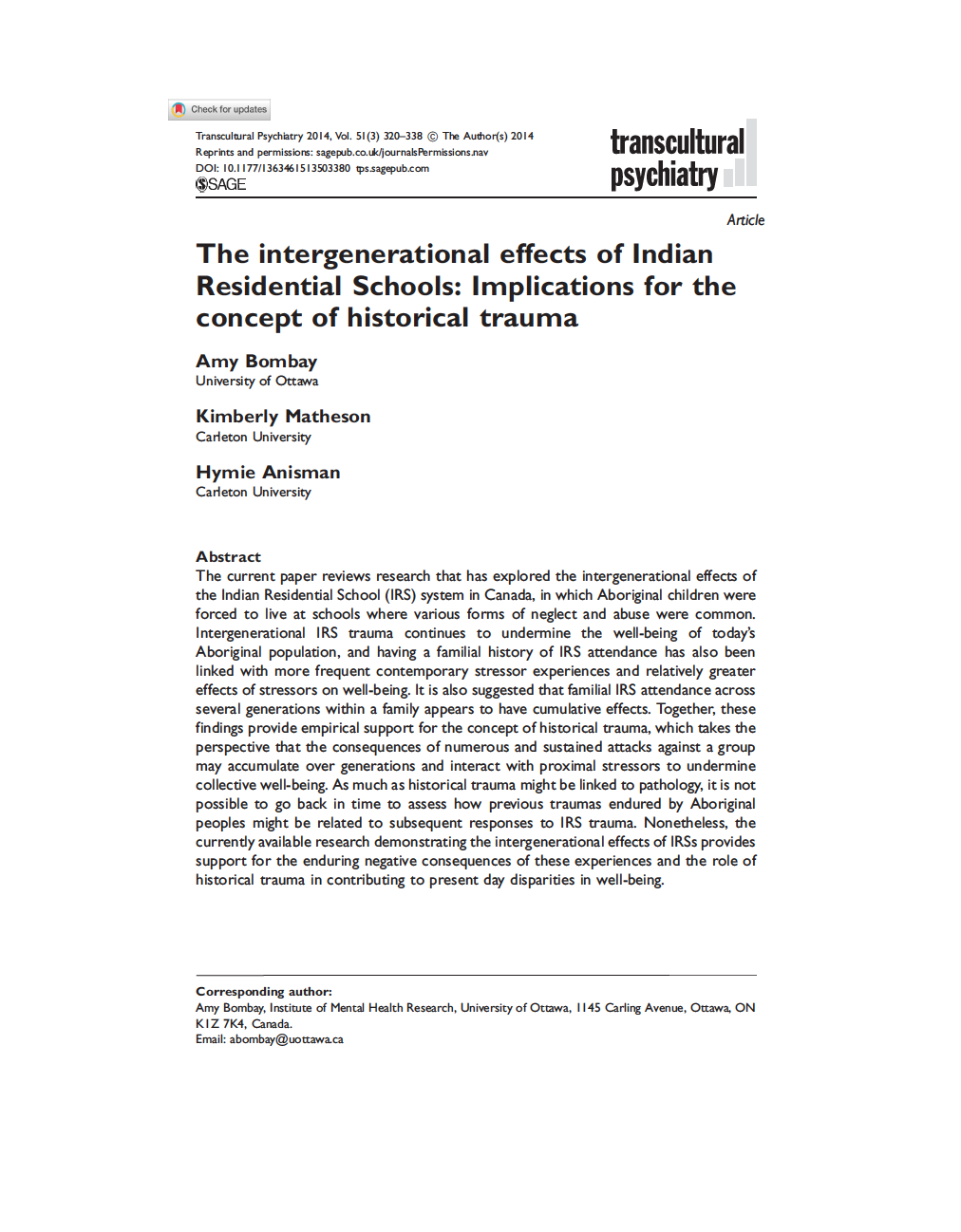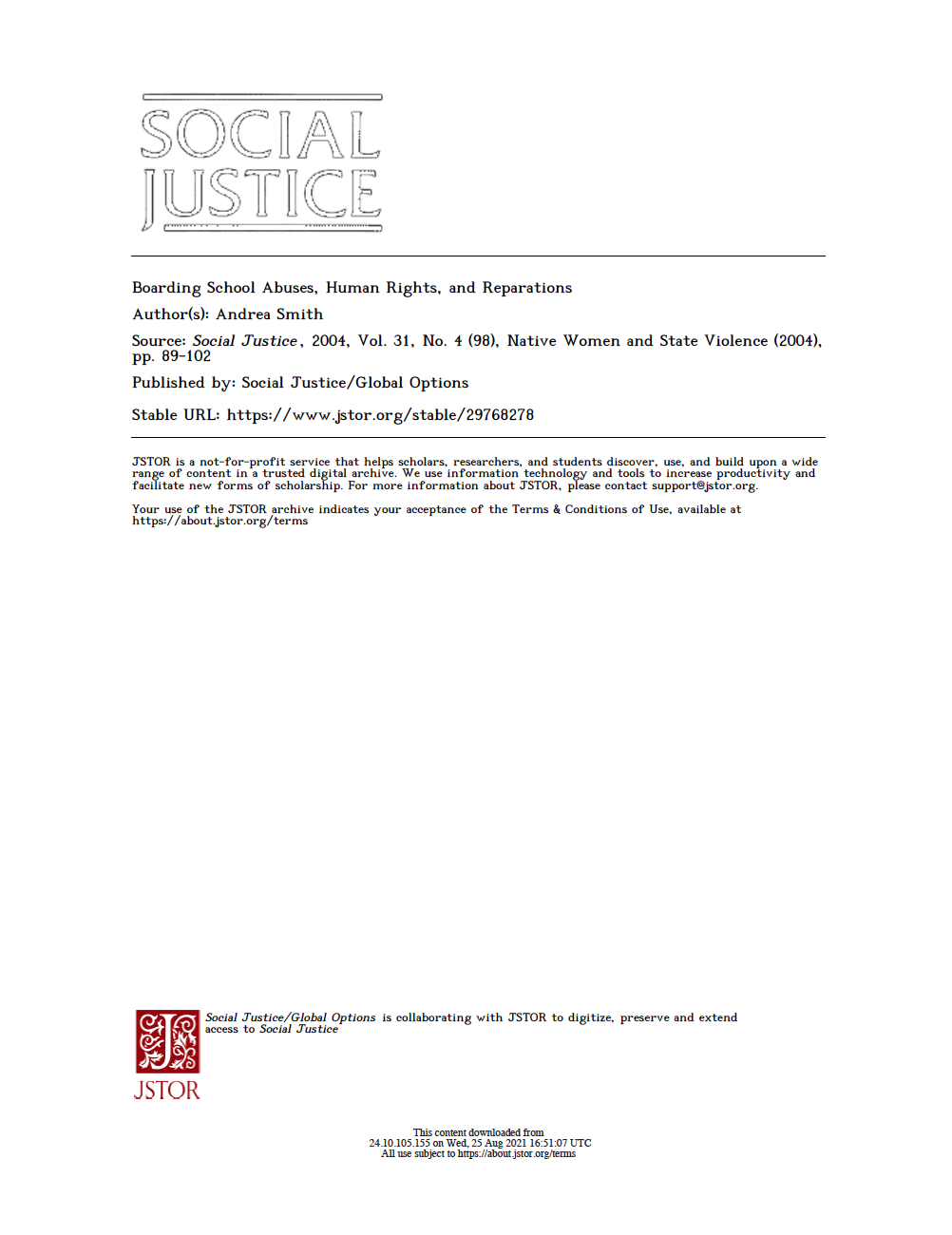Native American Boarding Schools
About Boarding Schools
Beginning with the Indian Civilization Act Fund of March 3, 1819 and the Peace Policy of 1869 the United States, in concert with and at the urging of several denominations of the Christian Church, adopted an Indian Boarding School Policy expressly intended to implement cultural genocide through the removal and reprogramming of American Indian and Alaska Native children to accomplish the systematic destruction of Native cultures and communities. The stated purpose of this policy was to “Kill the Indian, Save the Man.”
Between 1869 and the 1960s, hundreds of thousands of Native American children were removed from their homes and families and placed in boarding schools operated by the federal government and the churches. Though we don't know how many children were taken in total, by 1900 there were 20,000 children in Indian boarding schools, and by 1925 that number had more than tripled. The U.S. Native children that were voluntarily or forcibly removed from their homes, families, and communities during this time were taken to schools far away where they were punished for speaking their native language, banned from acting in any way that might be seen to represent traditional or cultural practices, stripped of traditional clothing, hair and personal belongings and behaviors reflective of their native culture. They suffered physical, sexual, cultural and spiritual abuse and neglect, and experienced treatment that in many cases constituted torture for speaking their Native languages. Many children never returned home and their fates have yet to be accounted for by the U.S. government.
Source: The National Native American Boarding School Healing Coalition
Orange Shirt Day
(Art by Andy Everson, K'ómoks First Nation)
Orange Shirt Day is a legacy of the St. Joseph Mission Residential School (1891-1981) Commemoration Project and Reunion events that took place in Williams Lake, BC, Canada, in May 2013. This project was the vision of Esketemc (Alkali Lake) Chief Fred Robbins, who is a former student himself. It brought together former students and their families from the Secwepemc, Tsilhqot’in, Southern Dakelh and St’at’imc Nations along with the Cariboo Regional District, the Mayors and municipalities, School Districts and civic organizations in the Cariboo Region.
The events were designed to commemorate the residential school experience, to witness and honor the healing journey of the survivors and their families, and to commit to the ongoing process of reconciliation.
As spokesperson for the Reunion group leading up to the events, former student Phyllis (Jack) Webstad told her story of her first day at residential school when her shiny new orange shirt, bought by her grandmother, was taken from her as a six-year old girl. You can read more about Phyllis’s story here.
The annual Orange Shirt Day on September 30th is an opportunity to create meaningful discussion about the effects of Residential Schools and the legacy they have left behind. A discussion all Canadians can tune into and create bridges with each other for reconciliation. A day for survivors to be reaffirmed that they matter, and so do those that have been affected. Every Child Matters, even if they are an adult, from now on.
The date was chosen because it is the time of year in which children were taken from their homes to residential schools, and because it is an opportunity to set the stage for anti-racism and anti-bullying policies for the coming school year. It is an opportunity for First Nations, local governments, schools and communities to come together in the spirit of reconciliation and hope for generations of children to come.
Source: orangeshirtday.org
Additional Resources
National Native American Boarding School Healing Coalition
- The mission of NABS is to lead in the pursuit of understanding and addressing the ongoing trauma created by the U.S. Indian Boarding School policy. It was created to develop and implement a national strategy that increases public awareness and cultivates healing for the profound trauma experienced by individuals, families, communities, American Indian and Alaska Native Nations resulting from the U.S. adoption and implementation of the Boarding School Policy of 1869.
Library of Congress Teacher’s Guide: Native American Boarding Schools
- The Library of Congress offers classroom materials and professional development to help teachers effectively use primary sources from the Library's vast digital collections in their teaching.
Vox: How the US Stole Thousands of Native American Children
- The long and brutal history of the US trying to “kill the Indian and save the man”.
My Auntie survived Residential School. I need to gather her stories before she’s gone.
- With a pandemic threatening to take our elders, Sarain Fox gathers stories from her auntie and matriarch, Mary Bell, who holds the family’s history: the legacy, the trauma, the truth. Mary is a residential school survivor who worked with the Truth and Reconciliation Commission to document the stories of other survivors. And now that she’s an elder, she’s focused on how those stories will live on.
Stolen Children | Residential School Survivors Speak Out
- How Residential Schools affected survivors and their children and grandchildren.
Schools tried to forcibly assimilate Indigenous kids. Can the U.S. make amends?
- A mass grave with the remains of 215 children was recently found near the now-closed Kamloops Indian Residential School in British Columbia, Canada, exposing a dark history of forcibly assimilating Indigenous people. Secretary of Interior Deb Haaland announced a federal initiative Tuesday that will “uncover the truth and the lasting consequences of these schools” in the U.S. Jeffrey Brown reports.
The dark legacy of Canada's residential schools, where thousands of children died
- Last year, archeologists detected what they believed to be 200 unmarked graves at a residential school in Canada, bringing new attention to one of the country's most shameful chapters.
Dawnland (2018)
- In Maine, a historic investigation—the first government-sanctioned truth and reconciliation commission (TRC) in the United States—begins a bold journey. For over two years, Native and non-Native commissioners travel across Maine. They gather testimony and bear witness to the devastating impact of the state’s child welfare practices on families in Maliseet, Micmac, Passamaquoddy and Penobscot tribal communities. Collectively, these tribes make up the Wabanaki people
- The feature-length documentary DAWNLAND follows the TRC to contemporary Wabanaki communities to witness intimate, sacred moments of truth-telling and healing. With exclusive access to this groundbreaking process and never-before-seen footage, the film reveals the untold narrative of Indigenous child removal in the United States.
Unspoken: America’s Native American Boarding Schools (2016)
- KUED takes a moving and insightful look into the history, operation, and legacy of the federal Indian Boarding School system, whose goal was total assimilation of Native Americans at the cost of stripping away Native culture, tradition, and language.
Our Spirits Don’t Speak English (2008)
- "Our Spirits Don't Speak English - Indian Boarding School" is a documentary film that examines the educational system that was designed to destroy Indian culture and tribal unity." Introduced by August Schellenberg, the film provides a candid look at the Indian Boarding School system starting in 1879 through the 1960s combining personal interviews with historical background. The philosophy of the Indian boarding school system was based on the concept of "kill the Indian and save the man", as stated by Captain Richard Henry Pratt who was the founder of the Carlisle Indian School. The film combines a number of powerful personal interviews, including Andrew Windy Boy, along with historical narration to reflect the harrowing, and often untold, experience of so many. Grace Thorpe, daughter of Jim Thorpe, the famous Sauk and Fox athlete, closes the film with her last public interview.
Indian Horse (2017)
- An adaptation of Ojibway writer Richard Wagamese’s award-winning novel, this moving and important drama sheds light on the dark history of Canada’s boarding schools or Indigenous Residential Schools and the indomitable spirit of aboriginal people.
- In the late 1950’s Ontario, eight-year-old Saul Indian Horse is torn from his Ojibway family and committed to one of the notorious Catholic Residential Schools. In this oppressive environment, Saul is denied the freedom to speak his language or embrace his Indigenous heritage while he witnesses horrendous abuse at the hands of the very people entrusted with his care. Despite this, Saul finds salvation in the unlikeliest of places and favourite winter pastime -- hockey. Fascinated by the game, he secretly teaches himself to play, developing a unique and rare skill. He seems to see the game in a way no other player can.
- His talent leads him away from the misery of the school, eventually leading him to the Pros. But the ghosts of Saul’s past are always present, and threaten to derail his promising career and future. Forced to confront his painful past, Saul draws on the spirit of his ancestors and the understanding of his friends to begin the process of healing.
We Were Children (2012)
- In this emotional film, the profound impact of the Canadian government's residential school system is shown through the eyes of two children who were forced to endure unimaginable hardships.
Indian Horse by Richard Wagamese
- Saul Indian Horse has hit bottom. His last binge almost killed him, and now he’s a reluctant resident in a treatment centre for alcoholics, surrounded by people he’s sure will never understand him. But Saul wants peace, and he grudgingly comes to see that he’ll find it only through telling his story. With him, readers embark on a journey back through the life he’s led as a northern Ojibway, with all its joys and sorrows.
- Stringing Rosaries presents a brief history of the boarding school programs for Indigenous Americans, followed by sixteen interviews with boarding school survivors, and ending with the author's own healing journey with her father.
- Inspired by the signing of the 2007 Indian Residential School Settlement Agreement in Canada, which provided a truth and reconciliation commission and compensation for survivors of residential schools, This Benevolent Experiment offers a multilayered, comparative analysis of Indigenous boarding schools in the United States and Canada. Because of differing historical, political, and structural influences, the two countries have arrived at two very different responses to the harm caused by assimilative education.
The intergenerational effects of Indian Residential Schools: Implications for the concept of historical trauma by Bombay et al.
Native Americans, Boarding Schools, and Cultural Genocide by Becky Little
Boarding School Abuses, Human Rights, and Reparations by Andrea Smith




